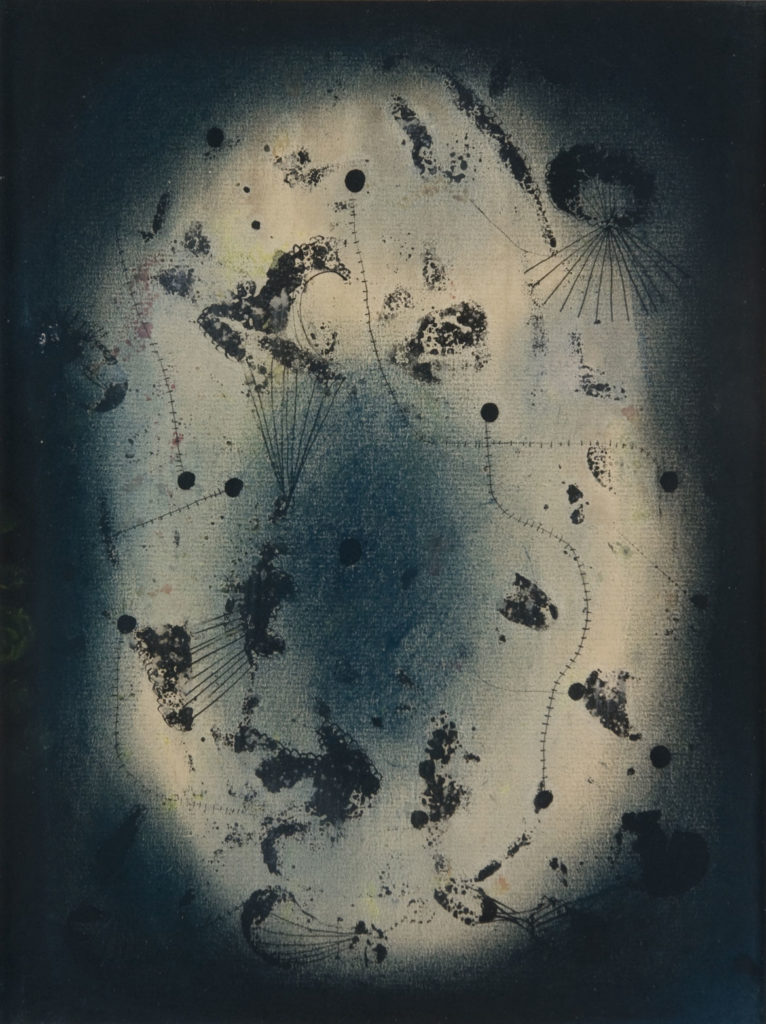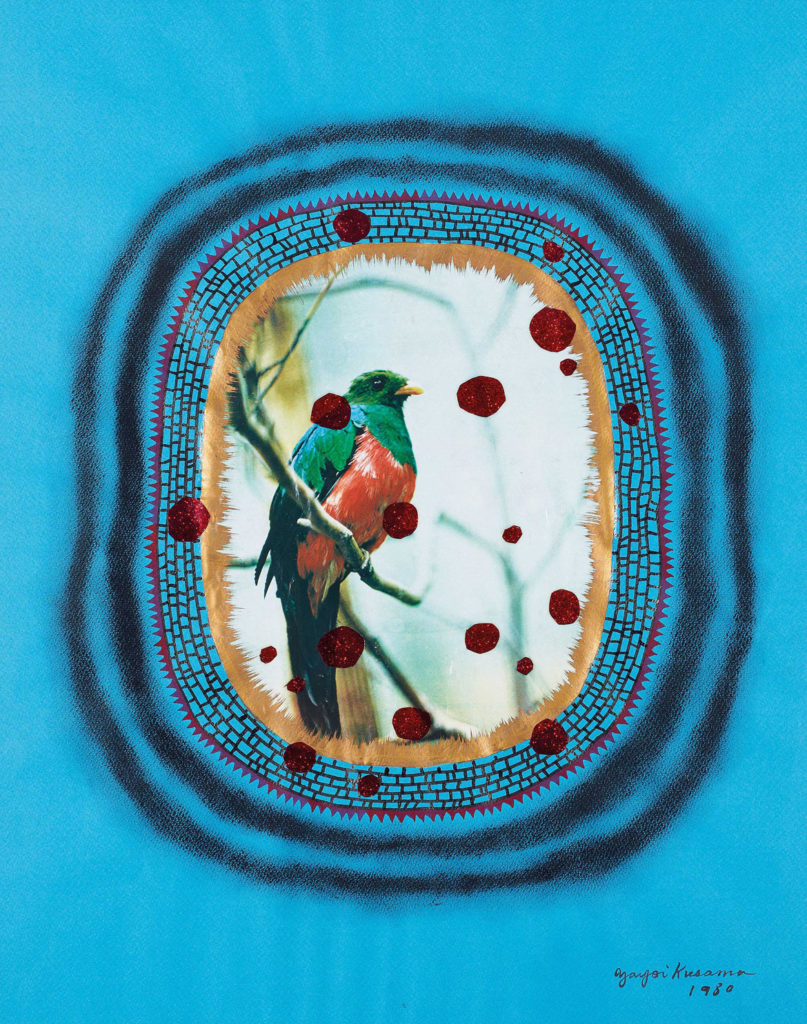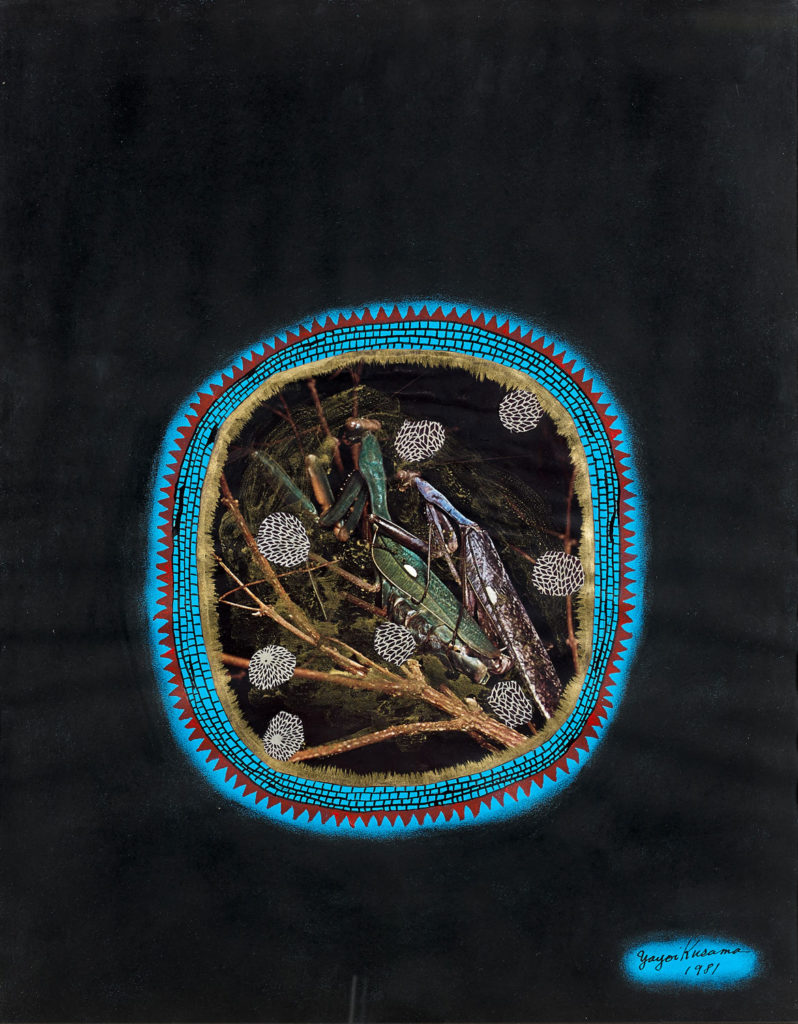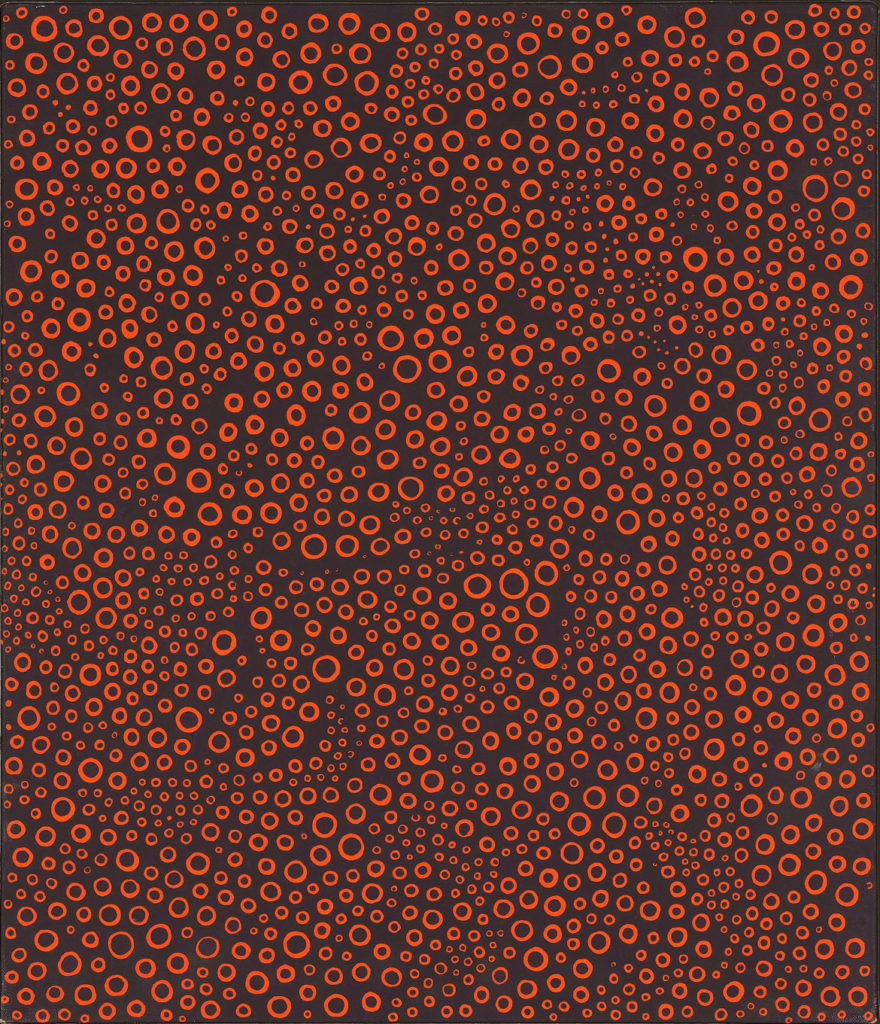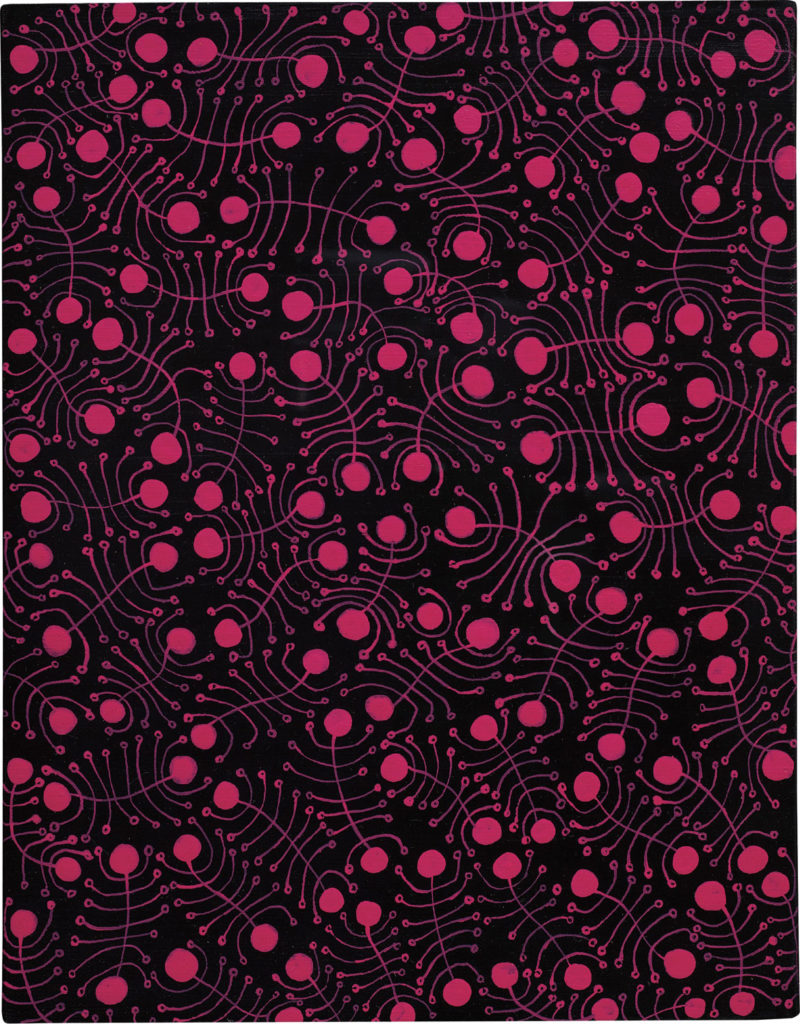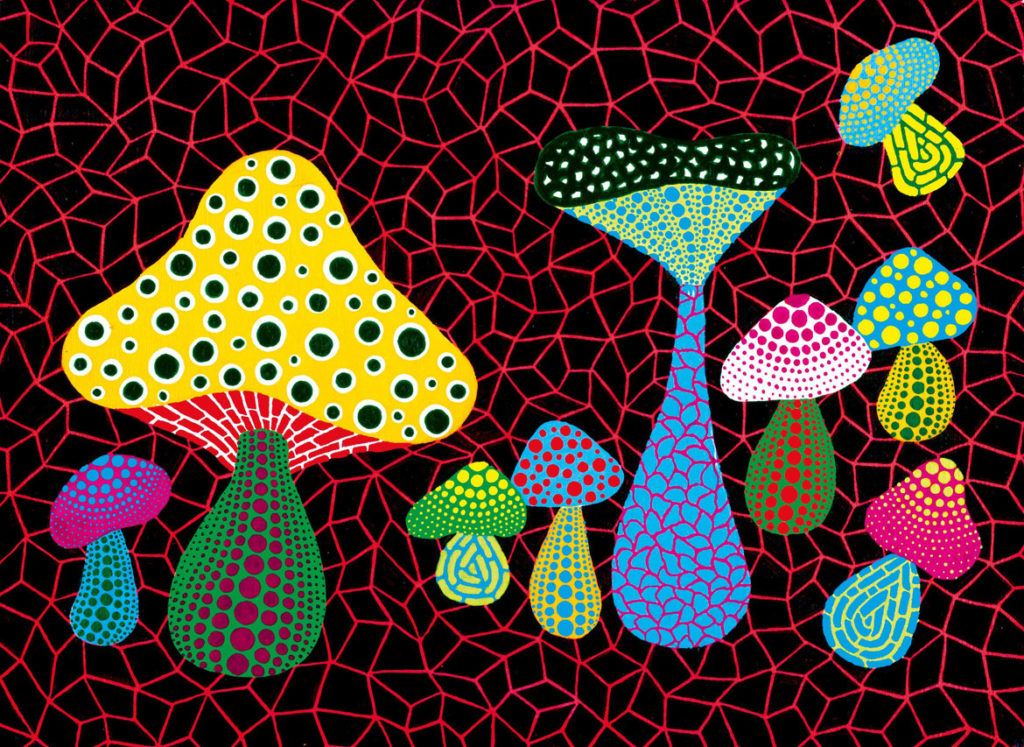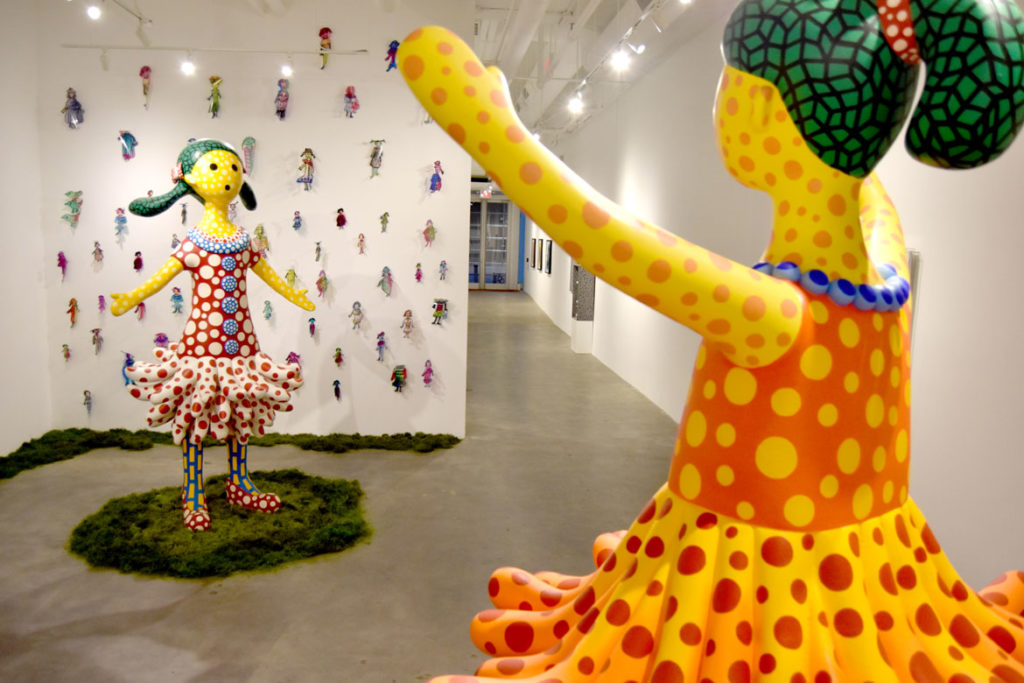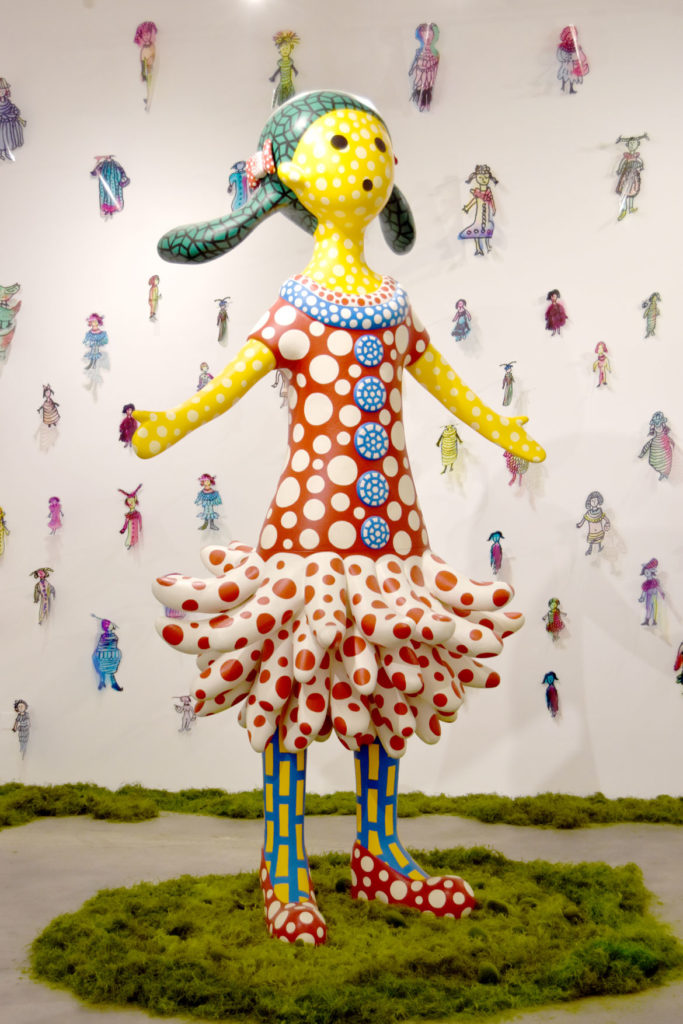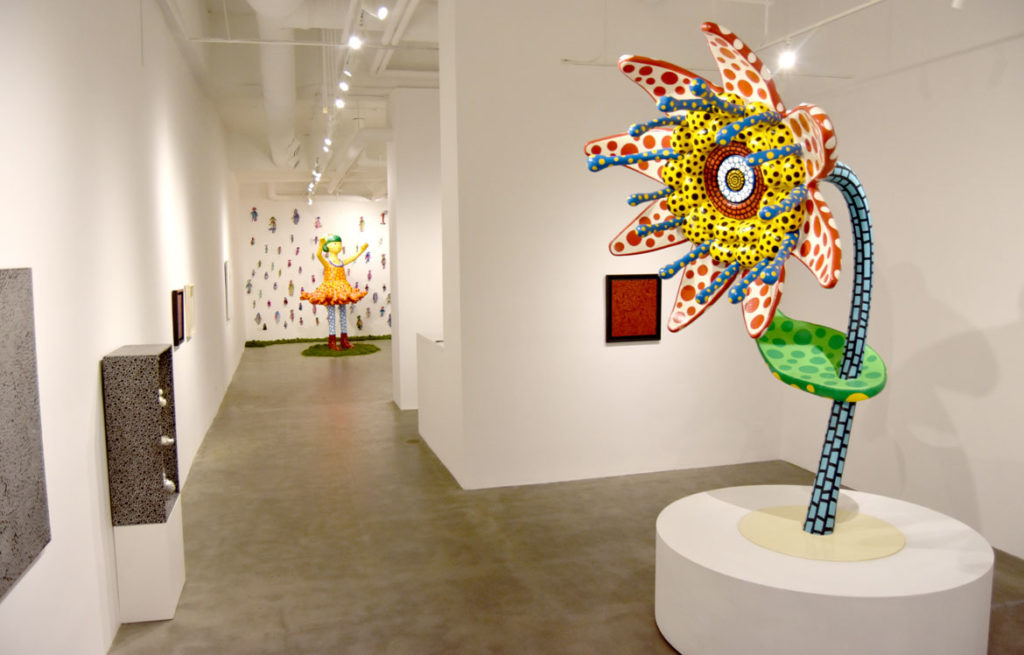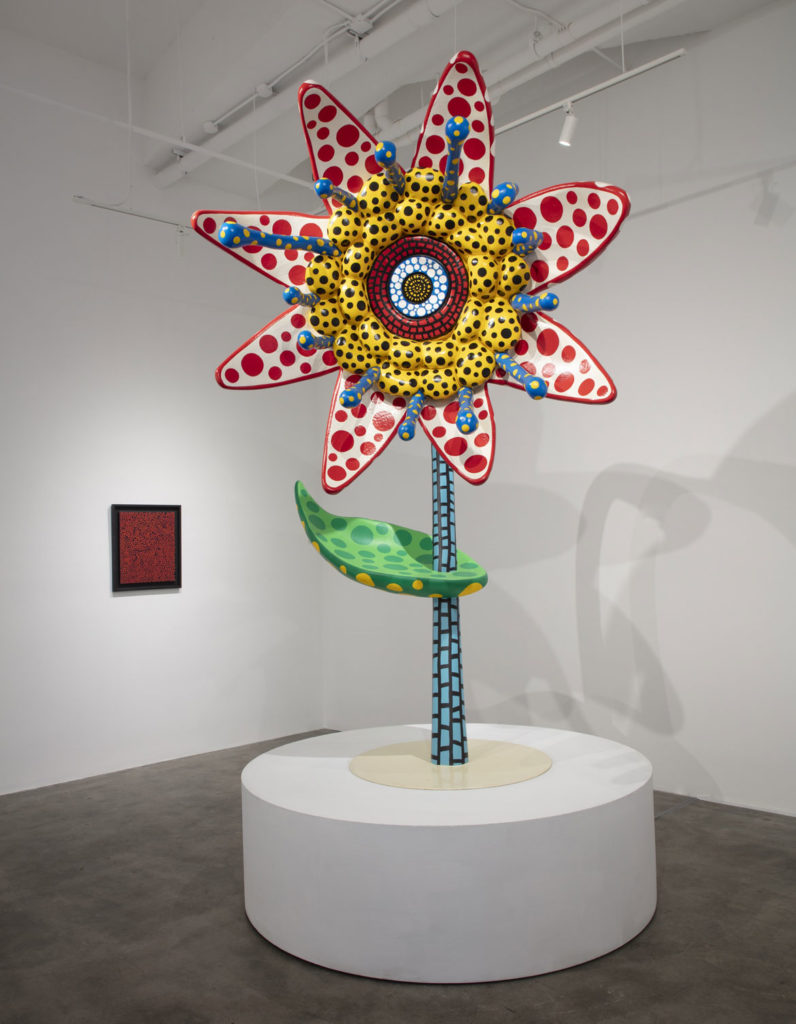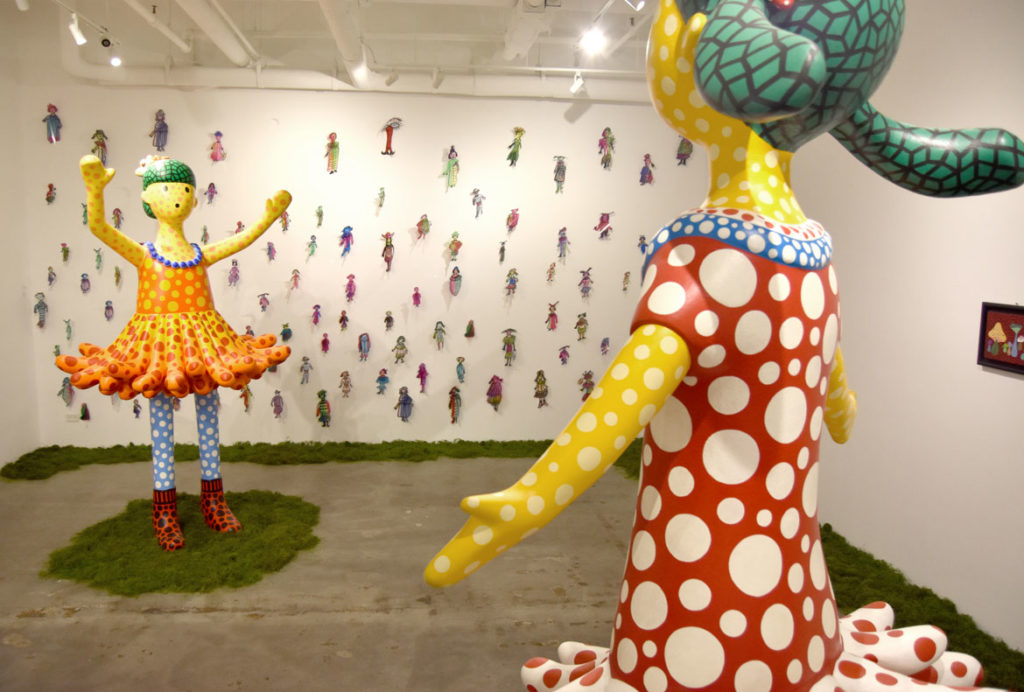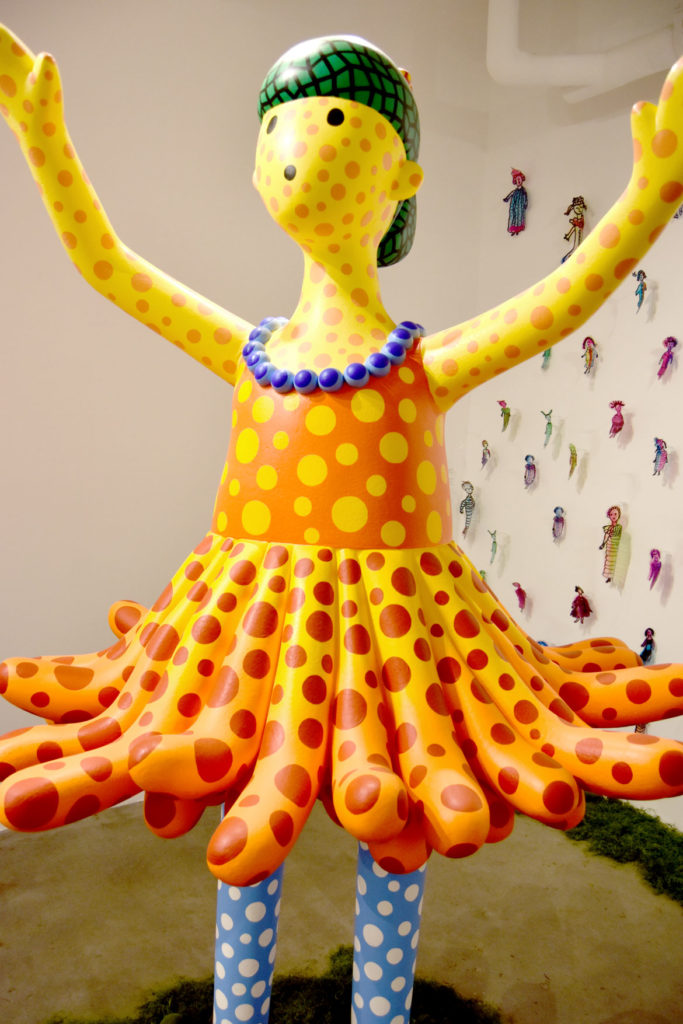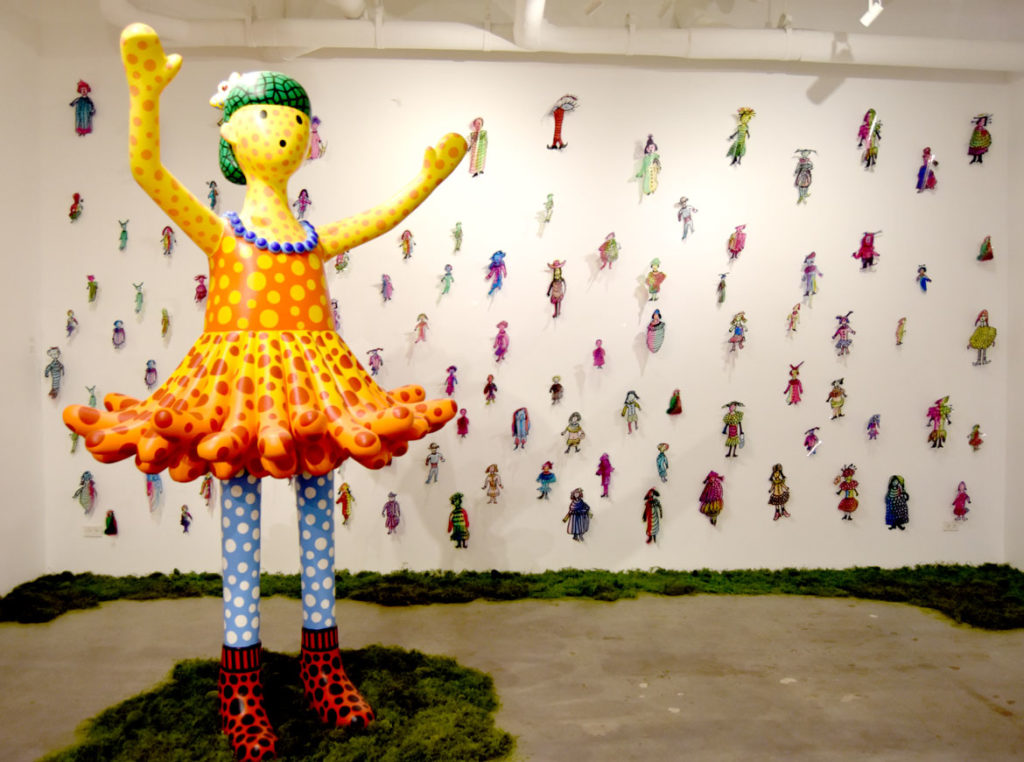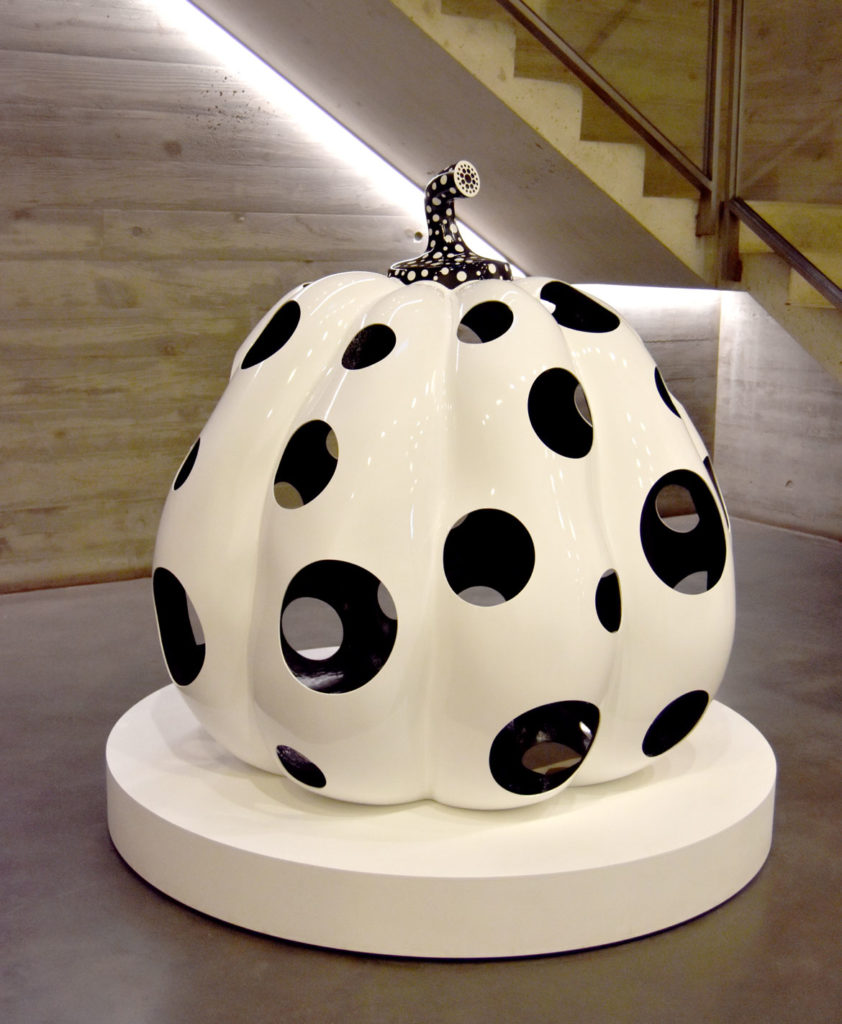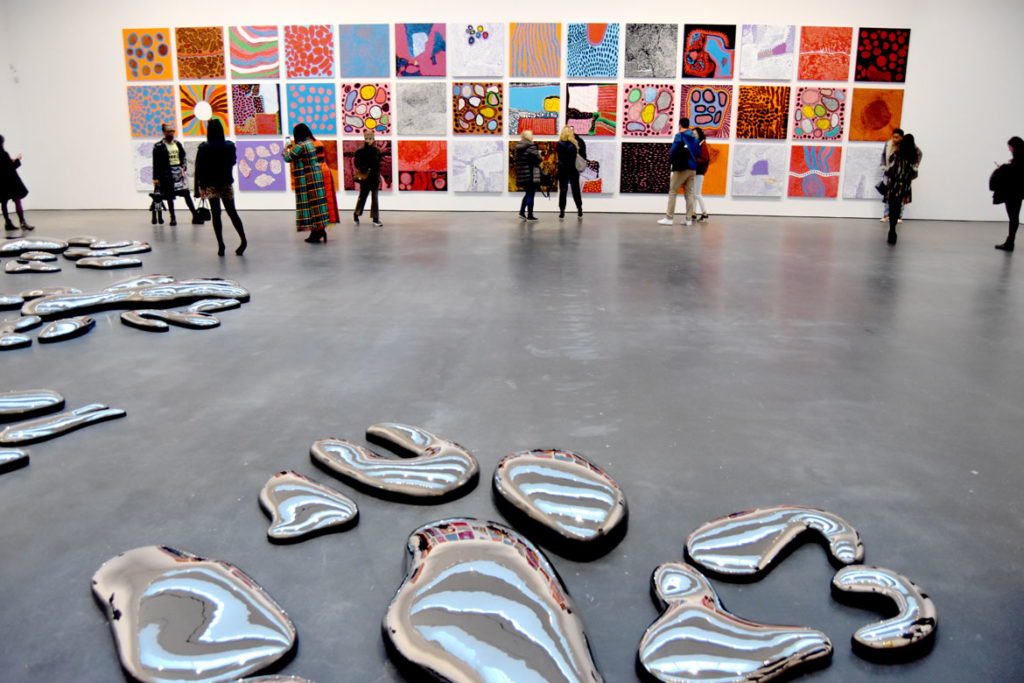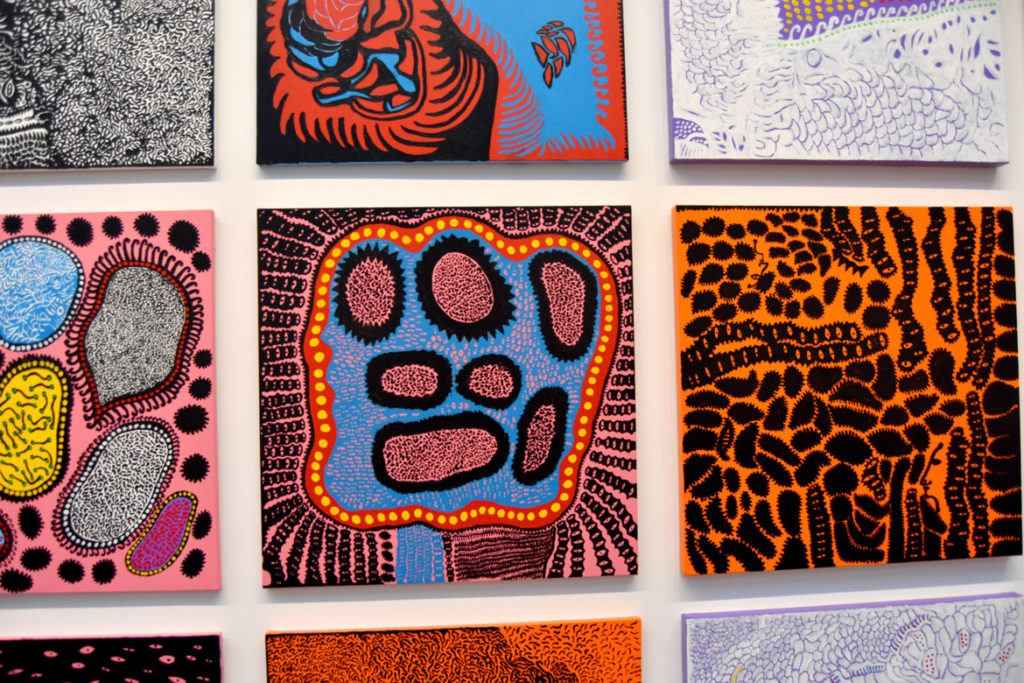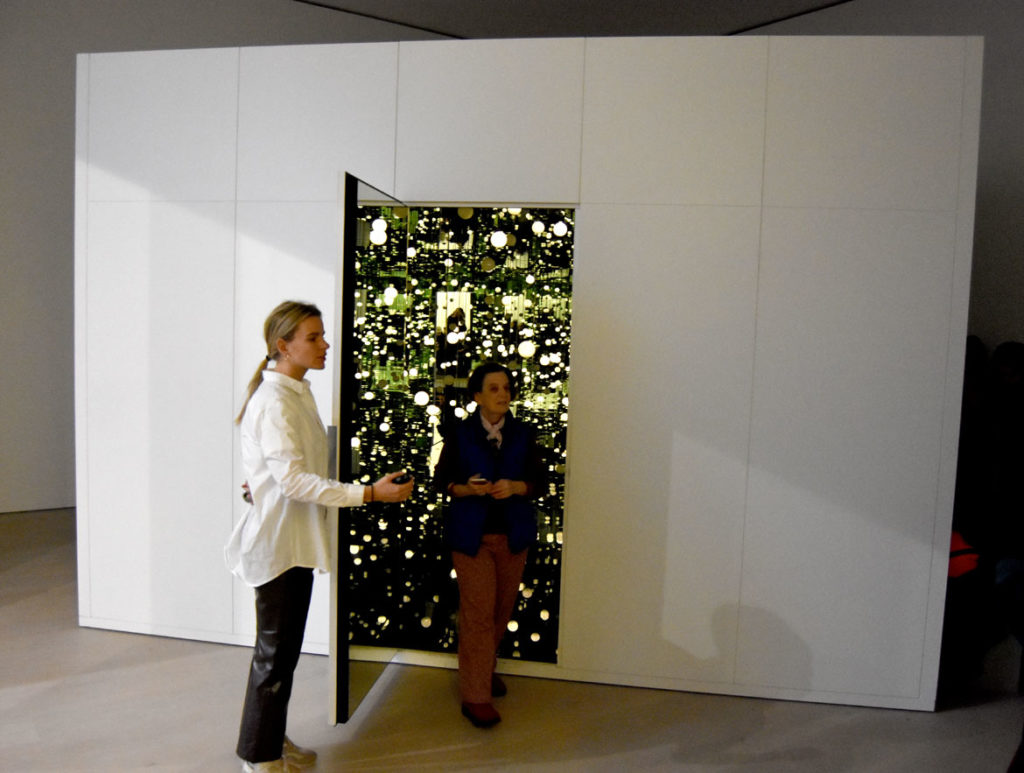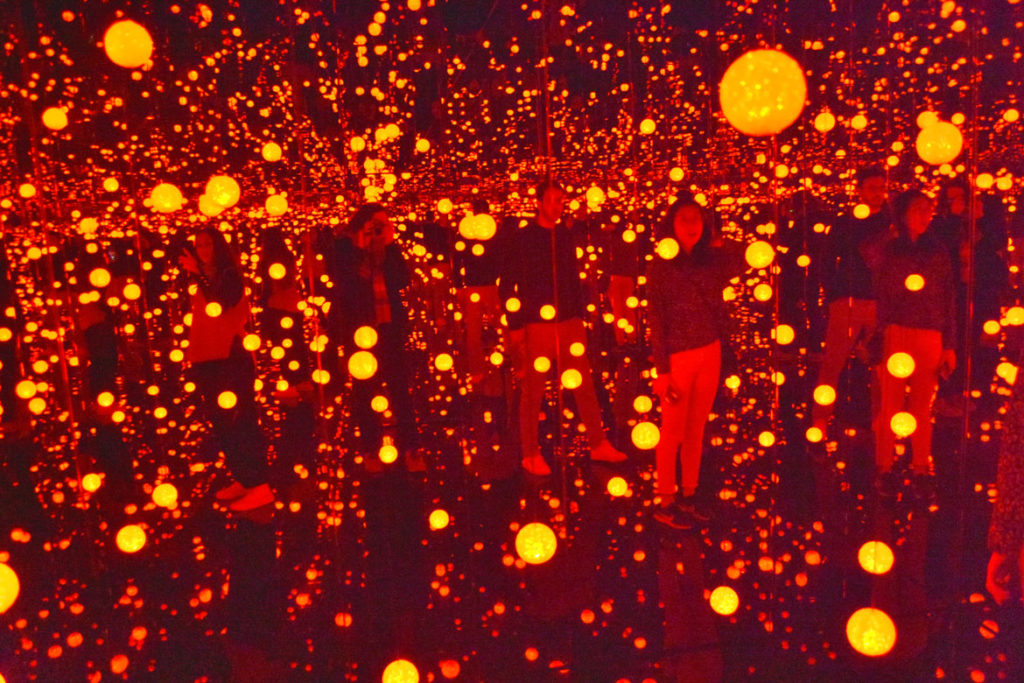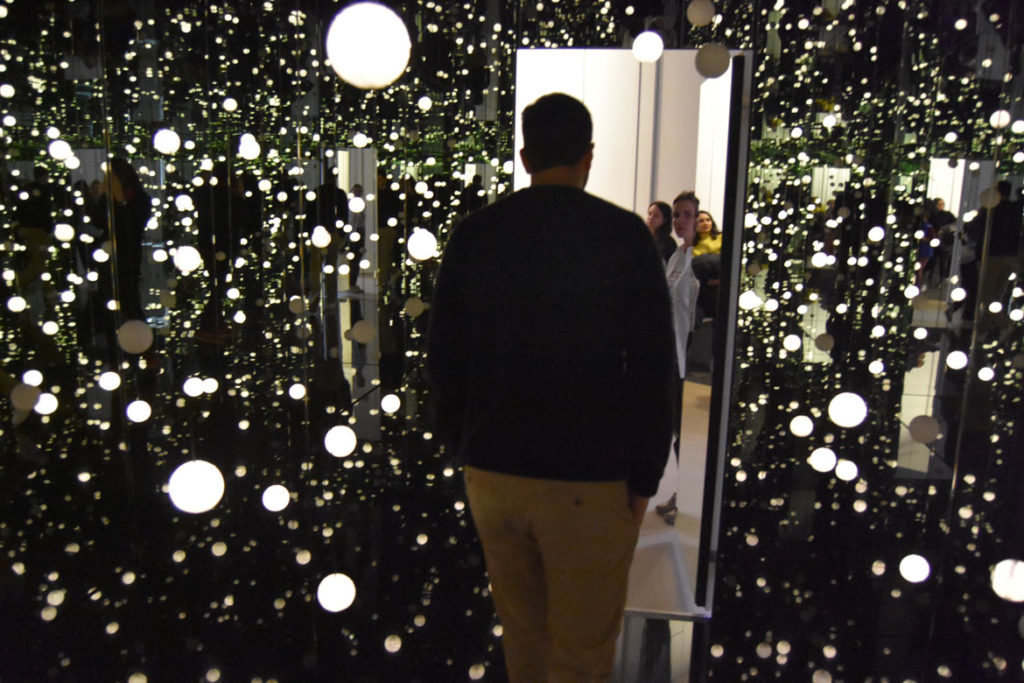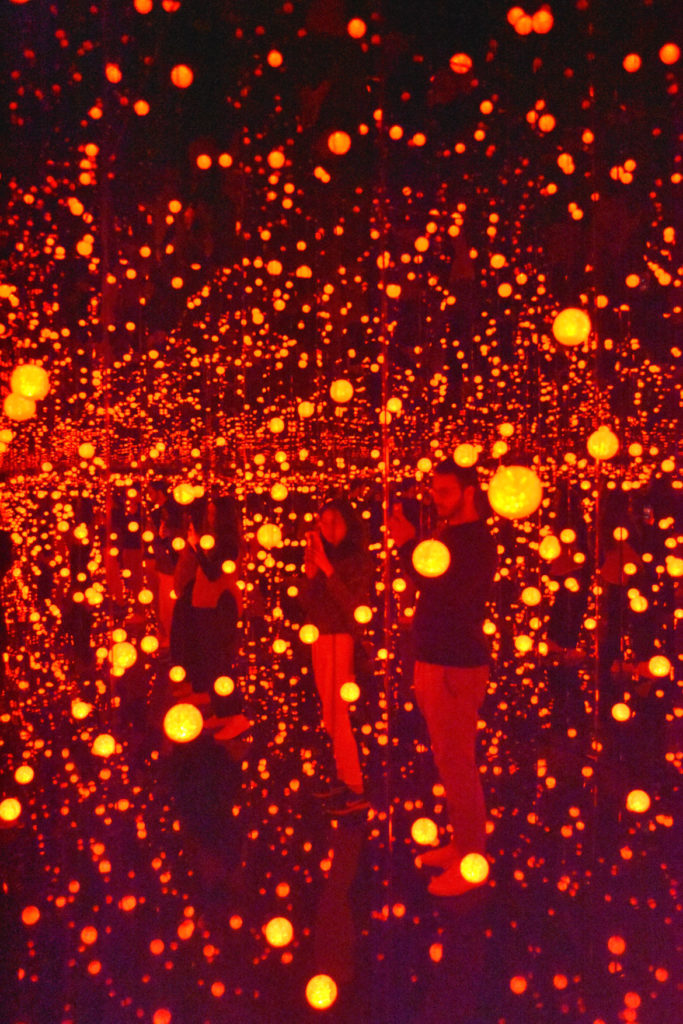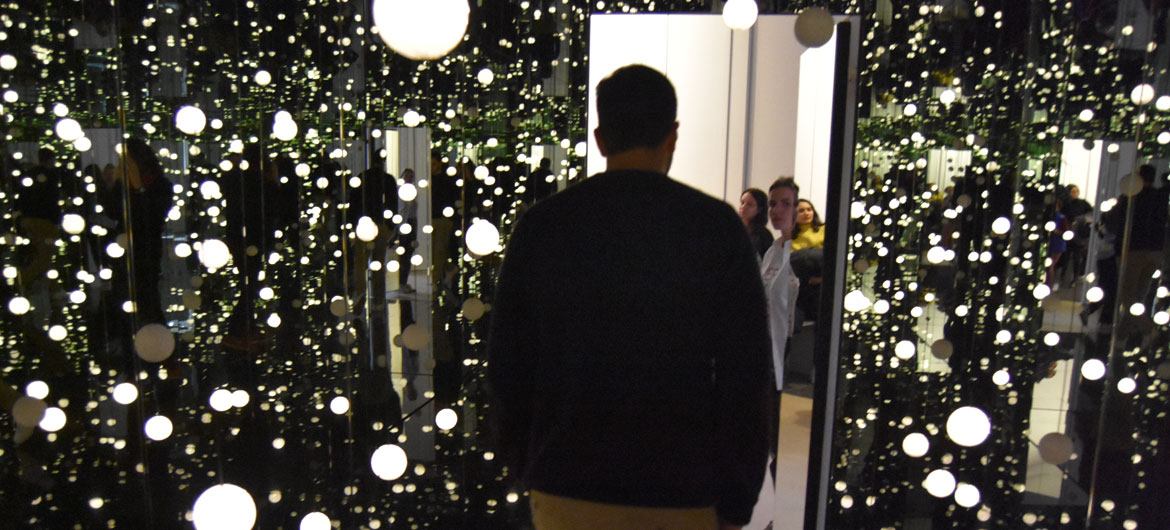The wait was about 20 minutes in the cold on an early December Thursday afternoon for one minute inside Yayoi Kusama’s new “Infinity Mirrored Room – Dancing Lights That Flew Up to the Universe.”
It was a white box set up inside a white gallery, as part of her exhibit “Every Day I Pray for Love” at David Zwirner from Nov. 9 to Dec. 14, 2019. When the box’s door opened, your eyes exploded with the constellation of lights inside the mirrored interior, reflecting seemingly to infinity. They cycled from darkness to a glowing line of white balls (actually plastic balls—like holiday lights—dangling from the ceiling) to a constellation of white balls that shifted to red then to darkness, repeat.
I’ve visited a couple of Kusama’s “Infinity Mirrored Rooms” in the past and been frustrated by the limited time visitors are allowed inside. Much too short for the cosmic, meditative experience I’ve hoped for. This time, I knew what I was getting into—a fun minute to take your psychedelic photos and hop out again—and was better able to briefly bliss out on the visionary moment.
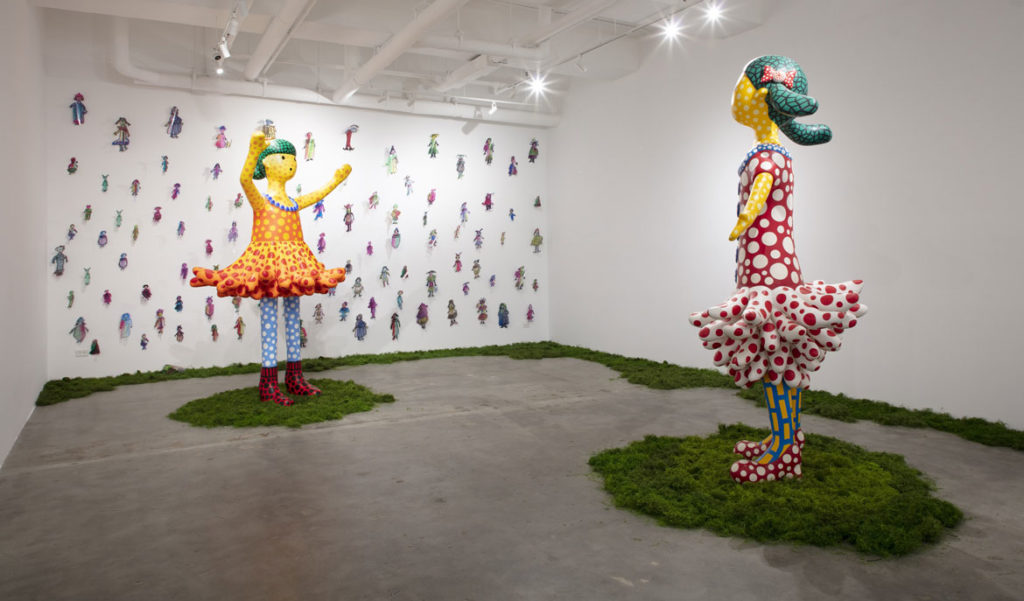
Coinciding with the Zwirner exhibition, Mucciaccia Gallery in New York is presenting “Yayoi Kusama,” an overview of her career with 28 works dating from 1951 to 2008, from Nov. 9, 2019, to Jan. 30, 2020. Together the two exhibits offered a sort of mini-retrospective of Kusama’s art.
“My entire life has been painted here,” a November 2019 statement from Kusama on the Zwirner wall read. “Every day, any day. / I will never cease dictating my whole life to my love for the universe. / Oh my dearest art, / With the challenge of creating new art, I work as if dying; these works are everything.”
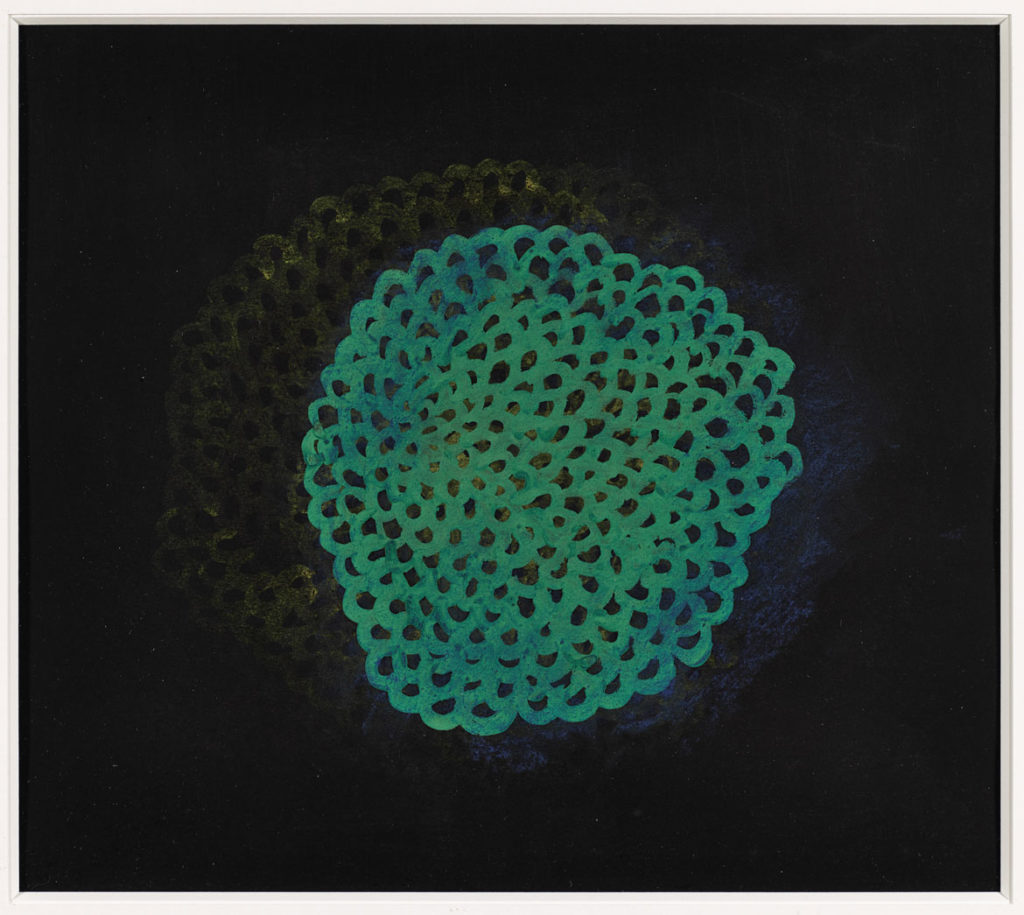
Yayoi Kusama was born in 1929 and grew up on her wealthy family’s seed nursery in Matsumoto, Japan. When she was 10, she had the first of the hallucinations that she would experience all her life—she’s described it as the red flower-patterned tablecloth that seemed to spread to everything.
She took up art in her homeland before moving to the United States in 1957—first Seattle, then New York the following summer. She filled canvases with little circles for her “Infinity Net” paintings, obsessive, minimalist versions of the Abstract Expressionist art. “This endless repetition caused a kind of dizzy, empty hypnotic feeling,” Kusama said in a 1964 radio interview.
Around 1962 and ’63, she began sewing and stuffing phalluses. She covered coats with them and shoes and chairs and a rowboat and whole rooms. (The Mucciaccia Gallery exhibition includes “Increment in the Spring,” a 1986 black and white polkadotted box filled with silver, white and yellow phallic protuberances and strings of beads.)
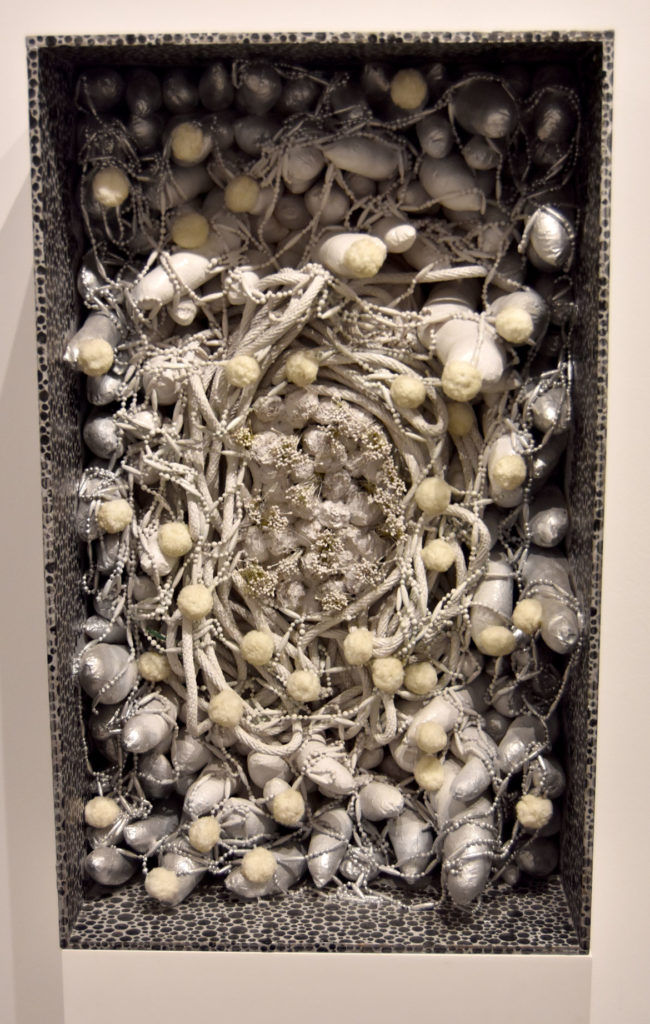
Kusama created her first “Infinity Mirror Room” in 1965, with “Infinity Mirror Room (Phalli’s Field).” She filled the floor of the mirrored space with hundreds of red and white polka dot phalluses. “Kusama’s Peep Show: Endless Love Show” from 1966 invited visitors to stick their heads in one of two windows into a hexagonal mirrored room aglow with blinking colored lights accompanied by music by The Beatles.
At “Body Festivals” and “Self-Obliteration” performances around New York in 1967 and ‘68, Kusama invited people to strip naked, then she painted them with polka dots. The events became increasingly politically charged—protesting the American war in Vietnam or the Soviet invasion of Czechoslovakia.
But her art had often been a way to get a grip on her mental struggles. “I paint them in quantity,” Kusama said of her late ‘50s “Infinity Net” paintings. “In doing so, I try to escape.”
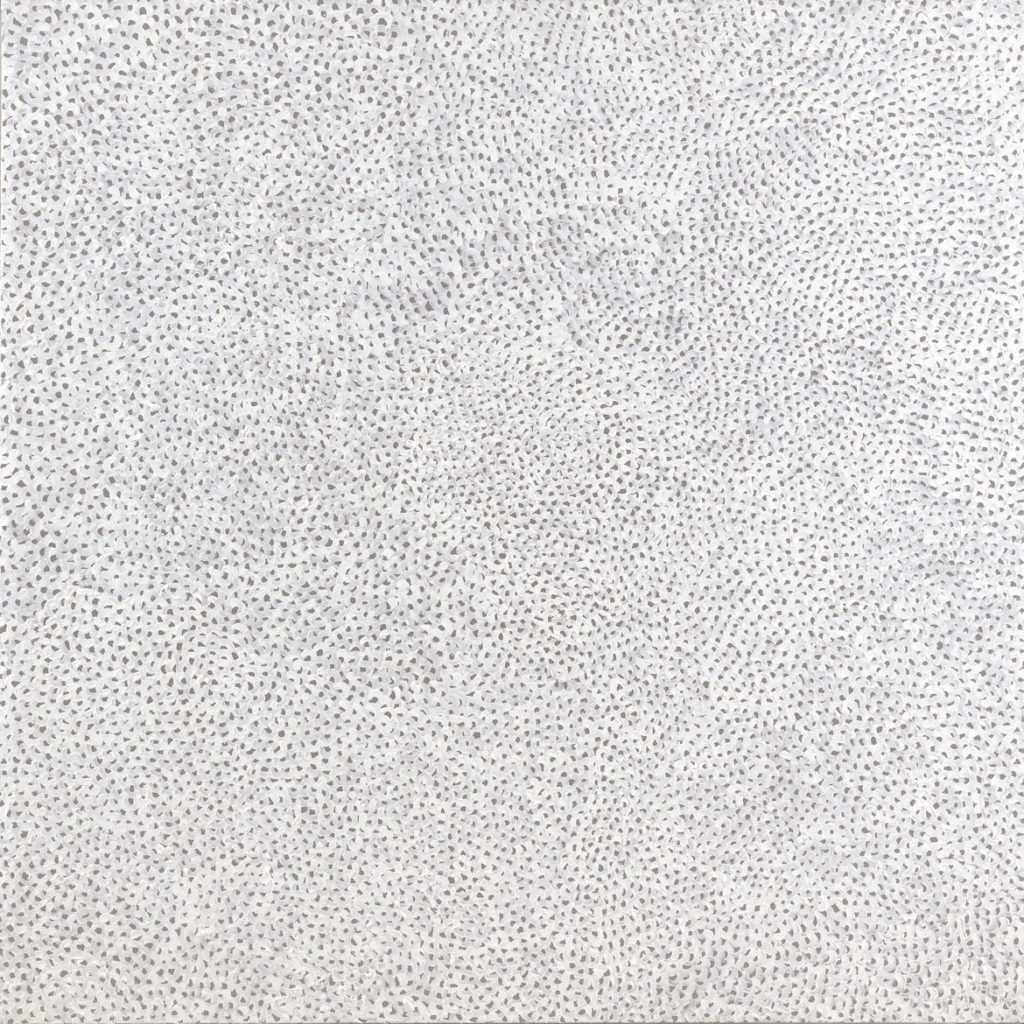
But she continued to suffer from anxiety attacks. In 1973, Kusama returned to Japan. She wrote short stories, poetry and novels (“Manhattan Suicide Addict,” 1978). She continued painting, sculpting and making installations. In 1977, she took up residence at the Seiwa Hospital in Tokyo, where she’d been getting periodic treatment for mental illness, while maintaining her own apartment and studio nearby.
To those most familiar with Kusama’s dots and phalluses, the Mucciaccia Gallery exhibition may surprise with collages of birds and bugs from the 1980s as well as a clay and glitter “Sleeping Girl,” from 1988, that can bring to mind a blue mermaid with long gold hair.
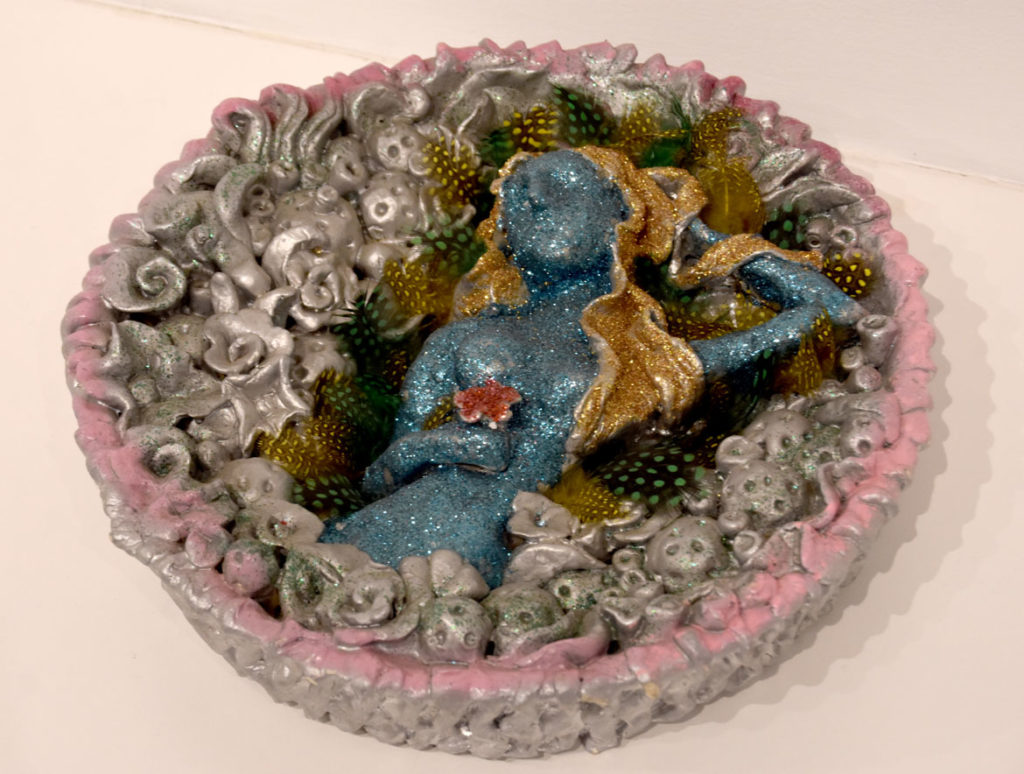
White Western art institutions began to rediscover Kusama as she returned to making “Infinity Mirrored Rooms” in the mid 1990s, and increasingly so over the past decade. Her art got bigger (like giant polkadot sculptures of pumpkins) and more immersive. The Mucciaccia Gallery includes a giant cartoon flower and two giant cartoon girls in polkadot dresses from the mid-2000s.
Zwirner gallery offered some of Kusama’s newest artworks—a giant black and white pumpkin sculpture, a long wall filled with a grid of new paintings from her “My Eternal Soul” series (brightly colored with things that look like squiggly bugs and eyes and microscopic organisms), and on the floor, a new stainless-steel blobs sculpture that resembled puddles of reflective mercury.
Related:
First Look Inside Yayoi Kusama’s Psychedelic ‘Infinity Room’ At Boston’s ICA
If this is the kind of coverage of arts, cultures and activisms you appreciate, please support Wonderland by contributing to Wonderland on Patreon. And sign up for our free, weekly newsletter so that you don’t miss any of our reporting.
